2020 — Part 2:
May the mission bell still ring
Of the colorful dreams
In the faith that everyone will be treated right— To Be Treated Rite | Terry Reid | 1976
The world’s best Liberty Bell experience is exactly where you’d least expect it: atop a lush, quiet hillside overlooking a glacial moraine in the middle of Wisconsin.
But we don’t yet know this as we exit the highway, 211 miles into our road trip and slowly snake uphill. The Highground Veterans Memorial Park in Neillsville, Wisconsin, is the new home to the Liberty Bell Minister’s fourth and final replica — the first of eight bells we plan to see this week. Beyond that, we don’t know what to expect.
Every Liberty Bell interaction leaves a little something to be desired. Still, everyone should see the real thing once in their lifetime. Tour Independence Hall, buy a soft pretzel from a street vendor, walk South Street, eat a cheesesteak at Jim’s (with provolone, for the love of all that’s holy), toss a penny on Ben Franklin’s grave, jog up the Art Museum steps and look at all the beautiful pictures inside. The Liberty Bell is an integral part of the Philadelphia tourist experience.
But there is something deeply unsatisfying about a broken bell. Toggle through the attraction’s one-star reviews, and you’ll find a vocal minority who say the quiet part out loud.

Cracked
The Liberty Bell entered this world modestly, shipped from London’s Whitechapel Bell Foundry to the new provincial Pennsylvania State House in Philadelphia. It arrived in good condition but cracked shortly after it was installed in the bell tower. Whether the Brits sold us a bum bell or we hung it and rung it improperly is up for debate. The dynamic duo of Pass and Stow attempted to fix the matter by recasting the bell. That just made things worse. The metallurgy was off and the tone sucked.
The State House Bell, as it was then known, was rung only on special occasions, gradually earning symbolic street cred despite its clunky voice. Early abolitionists adopted the bell’s image for their cause and gave the Liberty Bell its name.
Then it broke for good.
Unphased, we doubled down on the bell’s symbolic value, sending it out on tour. Americans turned out in droves to see it. Some who could get close enough carved off little chunks to keep as souvenirs.
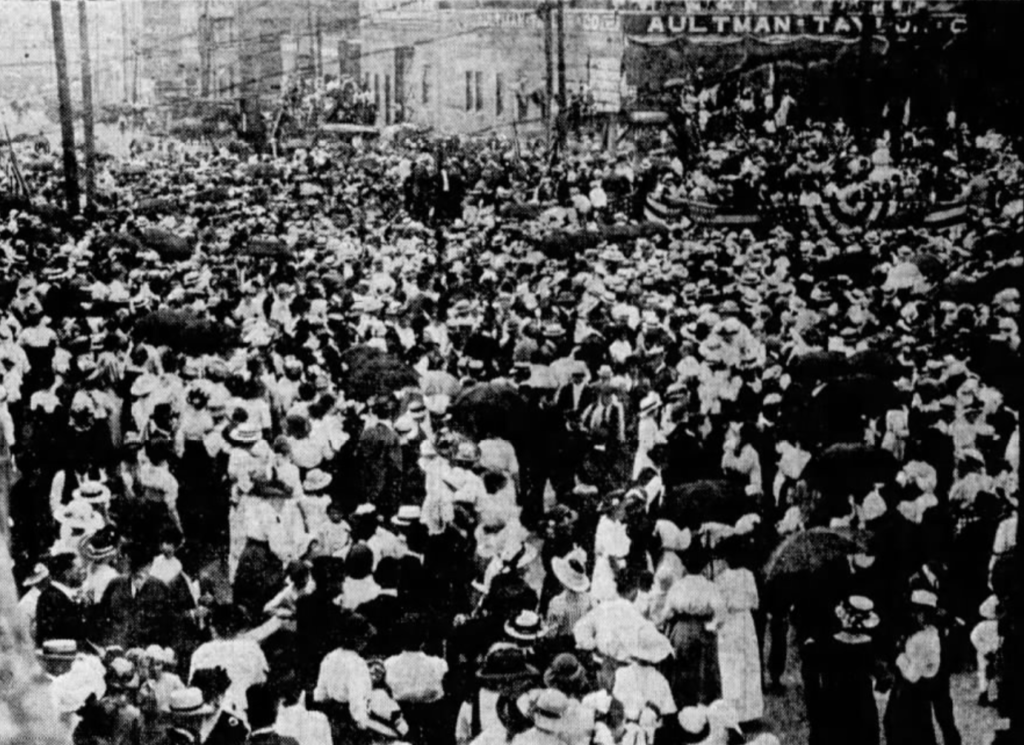
Liberty’s voice
The Liberty Bell retired from touring in 1915. That same year, the first Liberty Bell replica was cast. Dubbed the Justice Bell, it followed in the original’s footsteps, this time traveling the country to promote women’s suffrage. Even better than the real thing, this bell was well-made and ready to ring. But its voice would remain deliberately silent until the cause was won.
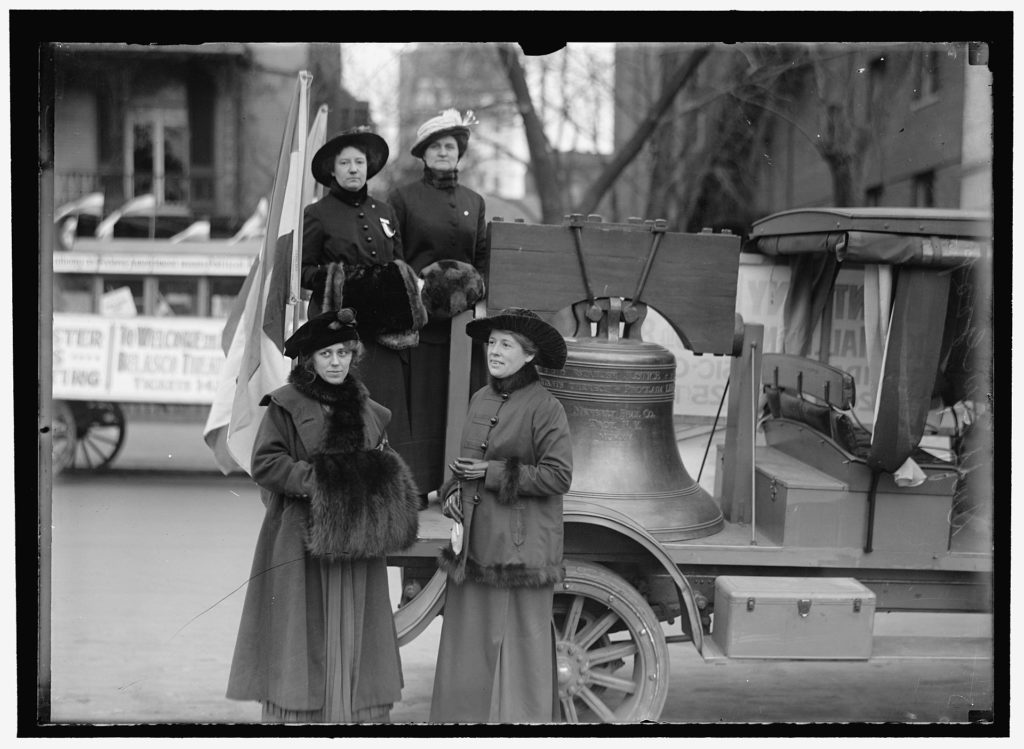
More than a hundred replicas followed, most notably the 57 U.S. Treasury bells, cast in 1950 as promotional tools for a summer Savings Bond drive. Those bells hit the ground ringing, touring their respective states and territories mounted on flatbed Fords. For the cost of a Savings Bond, you could take hold of the rope tied to the clapper, give it a hearty tug and ring the bell at full volume — a perfectly entertaining and patriotic transaction.
When the drive concluded, the Liberty Bells were gifted to their regions. Most were not sure what to do with them. Those housed inside Capitol buildings posed obvious acoustic threats and were summarily silenced. Those stationed outdoors ultimately became victims of their own popularity. Bells beg to be tolled — and mischievous boys, drunk college students and patriotic Americans alike were happy to oblige. By day, legislators were waylayed from their legislating. By night, neighbors were rattled from their sleep. Clappers were unceremoniously locked in place or removed altogether. The replicas that can still ring are rung only on official occasions by official people.
There are a few exceptions. If you ask nicely at the Liberty Bell Museum in Allentown, Pennsylvania, they’ll let you bong it gently. If you don’t mind stoking the ire of nearby outdoor foodcourt diners, you can reach beneath the North Carolina Liberty Bell, grab the clapper and let ‘er ring.
Some have tried to rekindle the patriotic spirit of the 1950 bond drive, most spectacularly, Joseph B. Head. Between 1975 and 1985, the self-proclaimed Liberty Bell minister brought his colorful, acrobatic roadshow to over a million schoolchildren in 36 states. Head was entertaining, but the highlight of the show — probably the highlight of the year — was when each kid got to ring the Liberty Bell.
Autumn breaking
It’s the 28th of August, and this humid, sticky, buggy midwestern summer is finally starting to crack. Living the last quarter-century in dry, breezy Colorado has left me ill-prepared. My body has responded to this climate by sweating nonstop.
There are two other cars as we pull into the Highground parking lot. Social distancing won’t be a problem here. It’s so quiet and peaceful; for a moment, I forget what’s going on in this state and in this country at this moment.
Madison and capital cities across the country have seen growing numbers of protests for months. In April, Wisconsinites violated the Governor’s stay-at-home order to protest the Governor’s stay-at-home order. In May, Wisconsinites again gathered at the Capitol, this time prompted by the police murder of George Floyd in Minnesota. Violence and property damage ensued as police and protestors clashed. In June, Capitol windows were broken. Two statues were toppled — the 1925 tribute to Norwegian American abolitionist and Union colonel Christian Heg and the (fortunately) replica of Jean Pond Miner’s 1893 allegorical figure Forward. Heg was beheaded and thrown in the lake. Forward was left in the street and dusted in baking soda.
Five days ago, a police shooting in Kenosha reignited tensions statewide. Three days ago, an armed militia gathered at the site of protests in Kenosha. Police responded by tossing water and gratitude down to the militia from atop their armored vehicles. Then a 17-year-old with an AR-15 and a bottle of water fatally shot two people and injured another.
Gaining ground
In 1983, Tom Miller and Don Quicker are two Wisconsinites, each trying to reach a higher ground. Miller envisions a memorial that will help his fellow Vietnam veterans heal and lay a framework for how his home state will remember the war. He pictures an easily accessible site in a rural area.
Don Quicker, a fellow Vietnam veteran, Bronze Star recipient and president of the Neillsville Economic Development Council, has the perfect spot in mind, a place out on the edge of town, rising above the forest and the cornfields. Quicker goes to Madison to plead his case and returns with unanimous support.
On a brisk October morning in 1986, Governor Tony Earl and 400 others gather 30 miles northeast of the state’s geographic center to break ground at what is then called the Wisconsin Vietnam Veterans Memorial Project. There are no sculptures or fountains or names carved in stone. There is only an idea and a crisp new American flag flying atop a 70-foot pole.
Addressing the role memorials play in helping contemplate the sweep of history, Earl acknowledges, “there are many who deserve our praise and gratitude who did not get it in their time.” Understanding the gravity of the task at hand, he continues, “sometimes memory keeps us possessed by demons, and we can’t get rid of them.”
Two years later, Fragments, a bronze sculpture by Robert A. Kanyusik, tours the state on a trailer raising money and awareness for the memorial park, now called The Highground. The first U.S. war monument to portray a woman in the statuary, the tribute includes bronze wind chimes engraved with names of the 1,214 Wisconsinites killed in the war and 30 listed as missing in action.
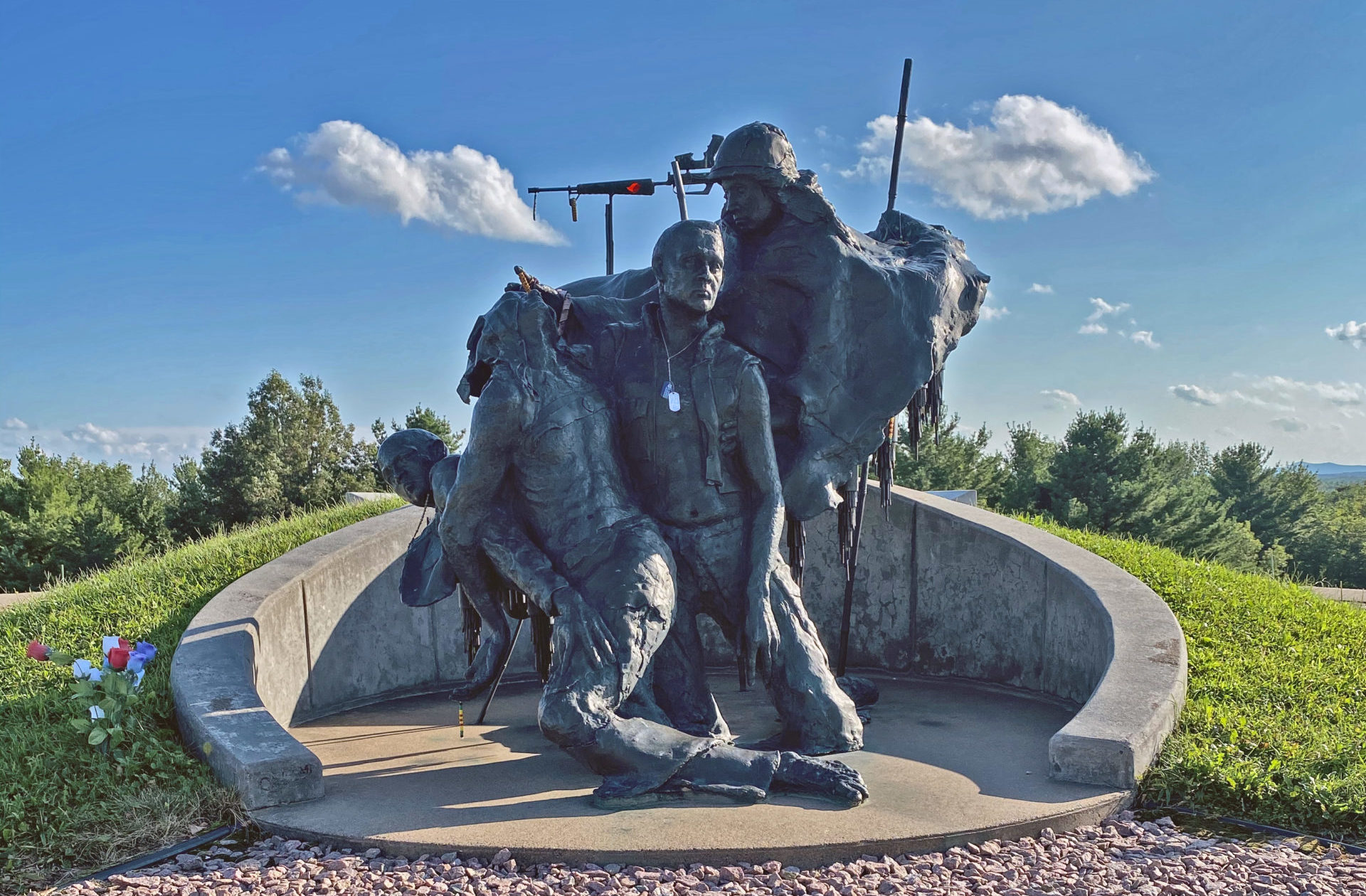
The following year, David Giffey’s Earthen Dove Effigy Mound is built as a tribute to all service members missing or imprisoned in action. Described as a living monument, it’s inspired by the Native American burial mounds found throughout the region. Built with soil from the state’s 72 counties and taking the shape of a dove with a 140-foot wingspan, it’s not the typical solemn American war monument. At the dedication ceremony, Vietnam veteran and Native American John Beaudin sets the tone. “This is a spiritual place where you can go and let your mother, the Earth, hold you. Let the children play on it. Dance on it. Lay back in the soft fold of its wings and let Mother Earth unburden you. Then get up and leave your troubles and cares there on the mound as you walk away, renewed and refreshed.”
Dawn and I are starting to feel renewed and refreshed as we stretch our legs and stroll through The Highground’s 155 verdant acres. Now funded largely through private donations, the park has grown to host 13 tributes, including a Persian Gulf memorial in the shape of a giant bootprint, a tribute to the Women Airforce Service Pilots, a statue honoring military dogs, and the park’s first national monument — a tribute to Native America Vietnam veterans.
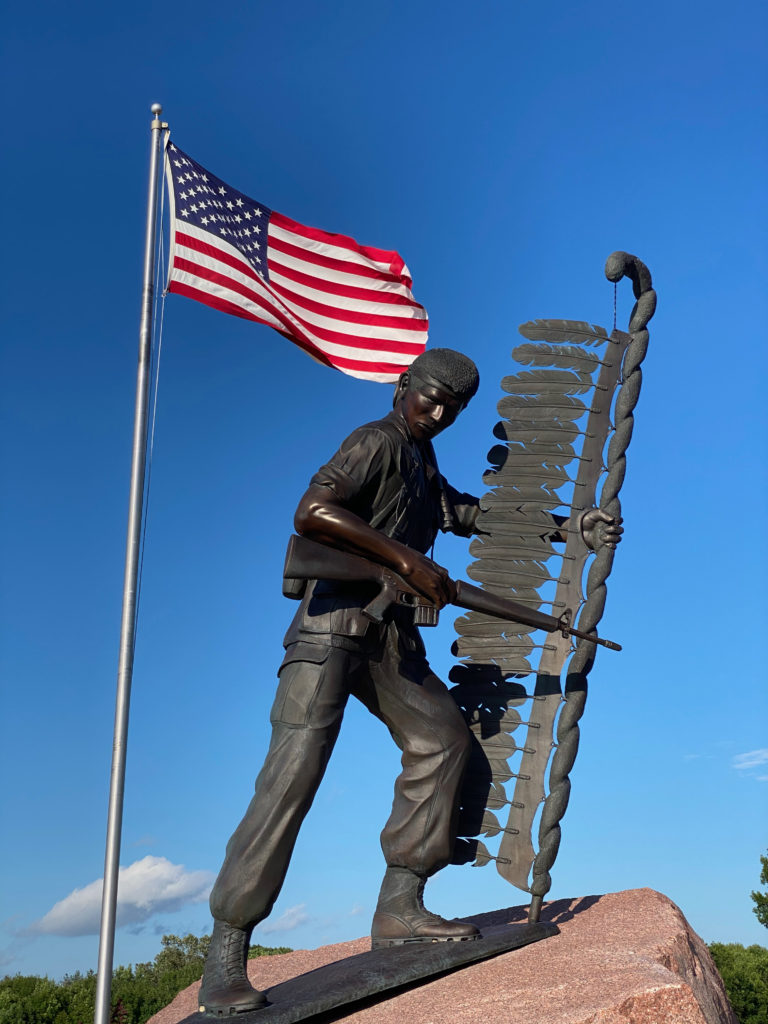
The Highground is inclusive, inviting and inspiring. With equal effect, the park captures who we are as a nation and who we aspire to be. It honors the sacrifices without glorifying the wars. We’re reminded not just of our rights as Americans but also of our obligations. Visitors can take solace and leave some of the weight of the world behind.
And we’ve saved the best for last.
When Joseph Head dies in 1990, the Liberty Bell Education Foundation agrees to give their bell to an organization that will pledge to continue its educational use. In 2002 Highground raises a 16 x 22-foot timber frame structure to shelter the bell from the harsh Wisconsin elements. Red oak pegs that will hold the structure together are commemoratively sold for $100 apiece, raising $10,000 of the necessary $16,000 cost. Levi Mast harvests white oak from his Granton farm and cuts the beams at his sawmill. Master timber framer Lyle Lindholm of Watertown and a group of volunteers build the structure in a warehouse, disassemble it and rebuild it on site.
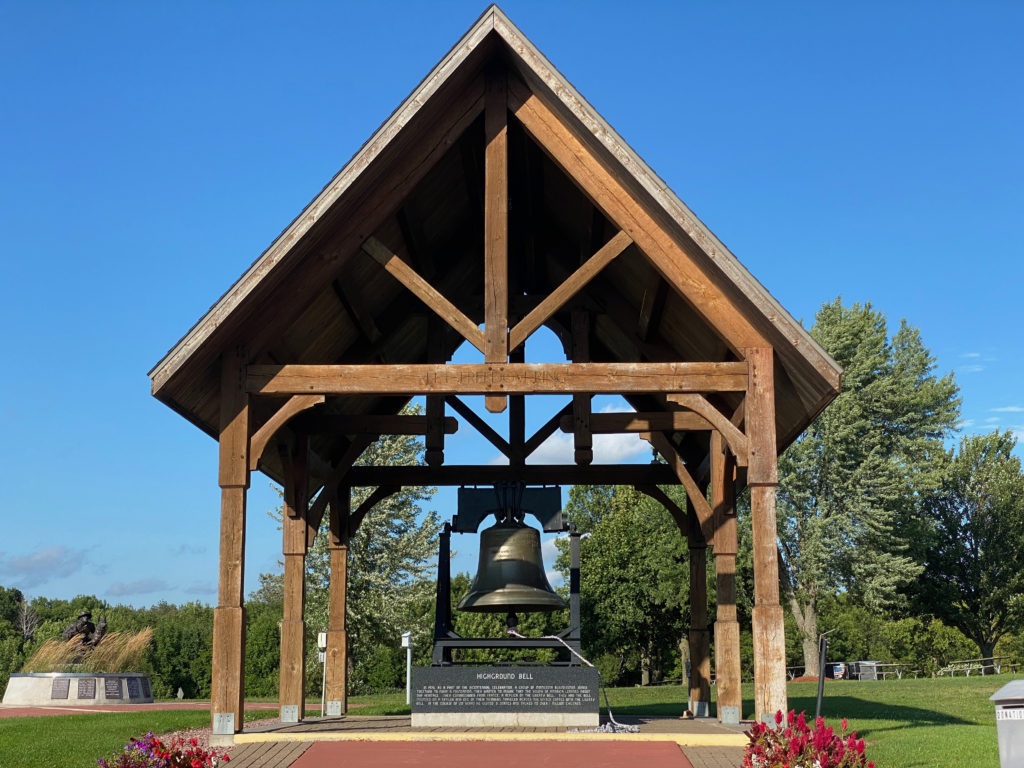
Good vibrations
This is the 37th Liberty Bell replica I’ve seen in person and the first with a rope tied to its clapper, just sitting there begging for some action. It’s long enough so you can ring the bell nice and loud without blasting your eardrums. After eighteen years of road trips and research and bell selfies and inadvertently-earned expertise, I’m going to ring the Liberty Bell. I’m about to experience the patriotic thrills and chills felt by a million Savings Bond buyers and a million schoolchildren.
Dawn takes the first crack. She steps right up, takes the rope in hand and gleefully tugs. A thick, strong, metallic E-flat peals across this higher ground and reverberates throughout the glacial moraine below. It peals for the veterans like my father-in-law, who deftly prevented his munitions truck from exploding in Korea, allowing my wife and her family to exist. It peals for healthcare workers and those who can’t telecommute and for scientists working tirelessly on a vaccine. It peals for Black lives. It peals in the celebration of all that we are and in the hope of all that we can be.
PART 3: ILLINOIS
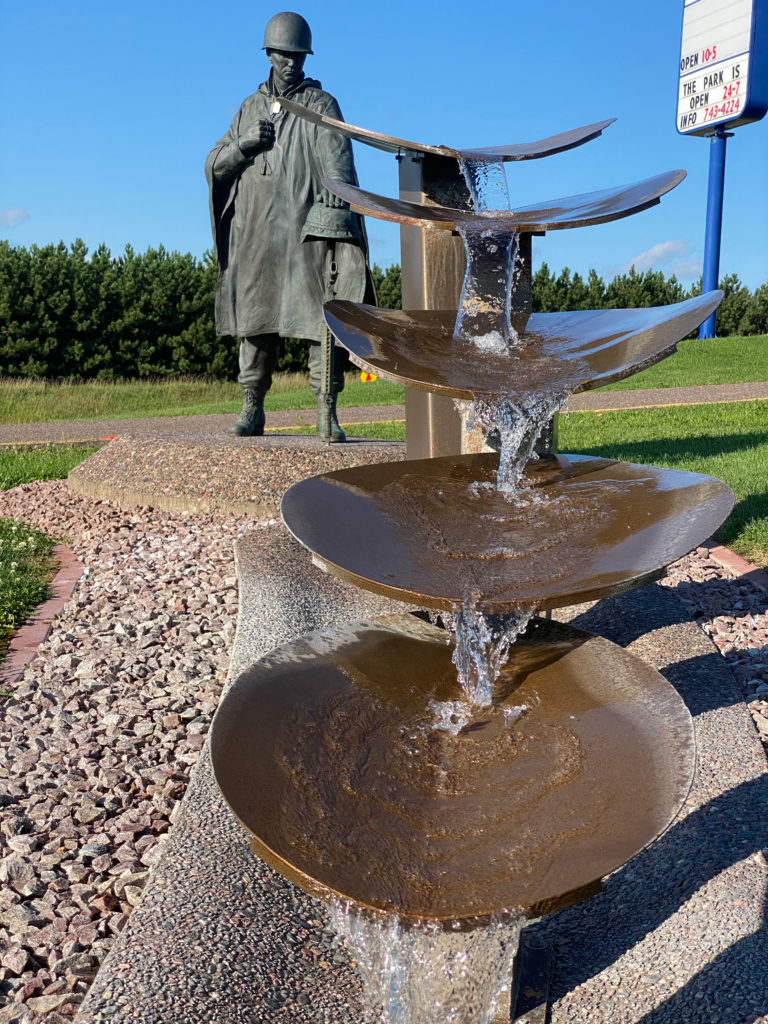
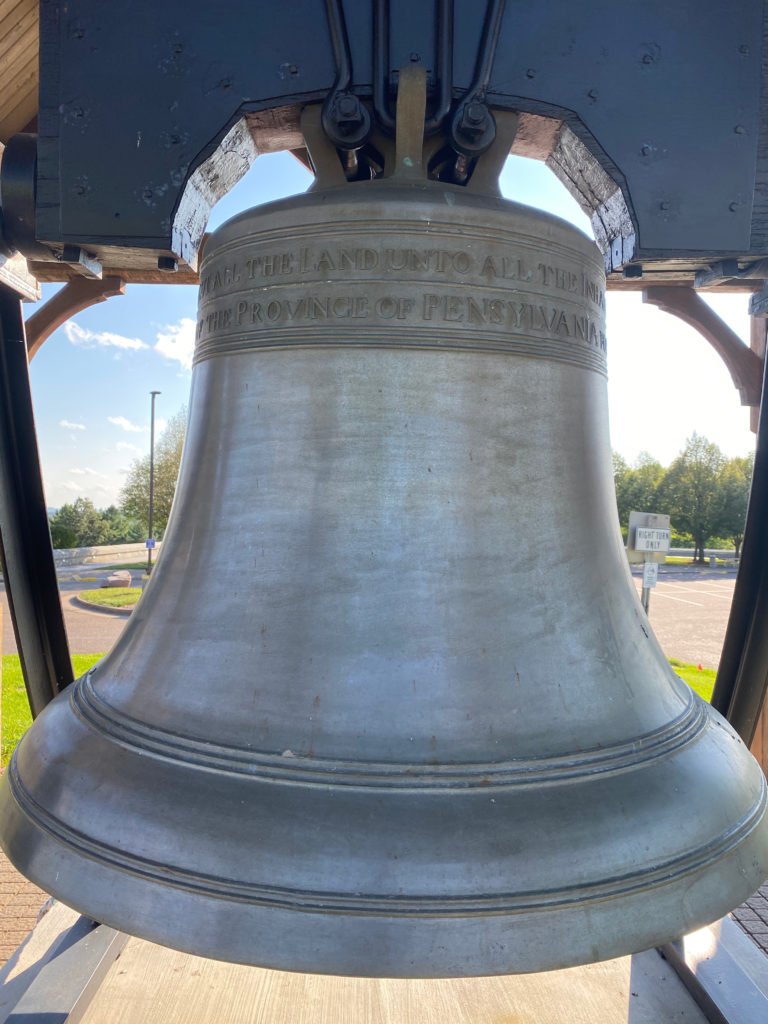
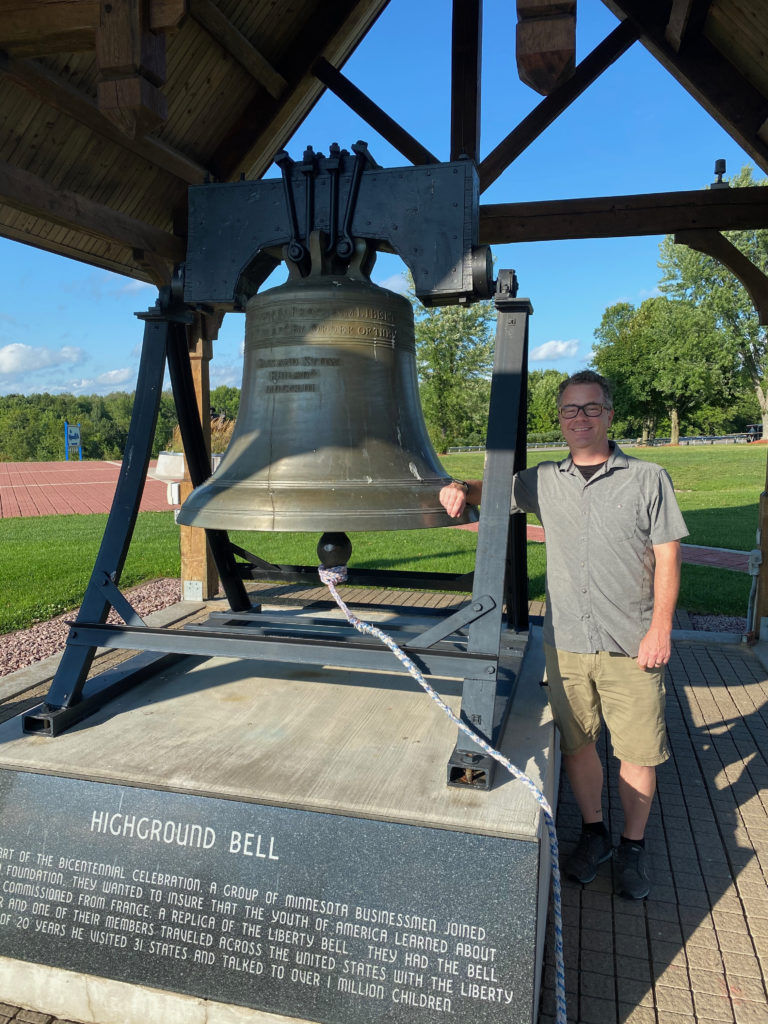
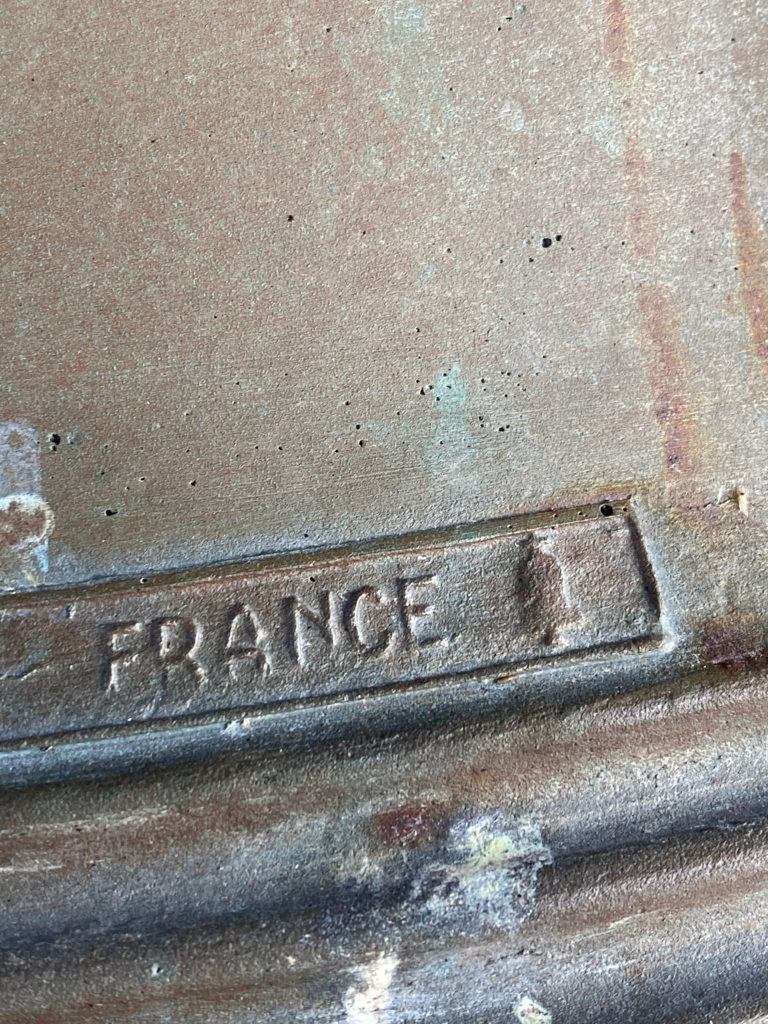
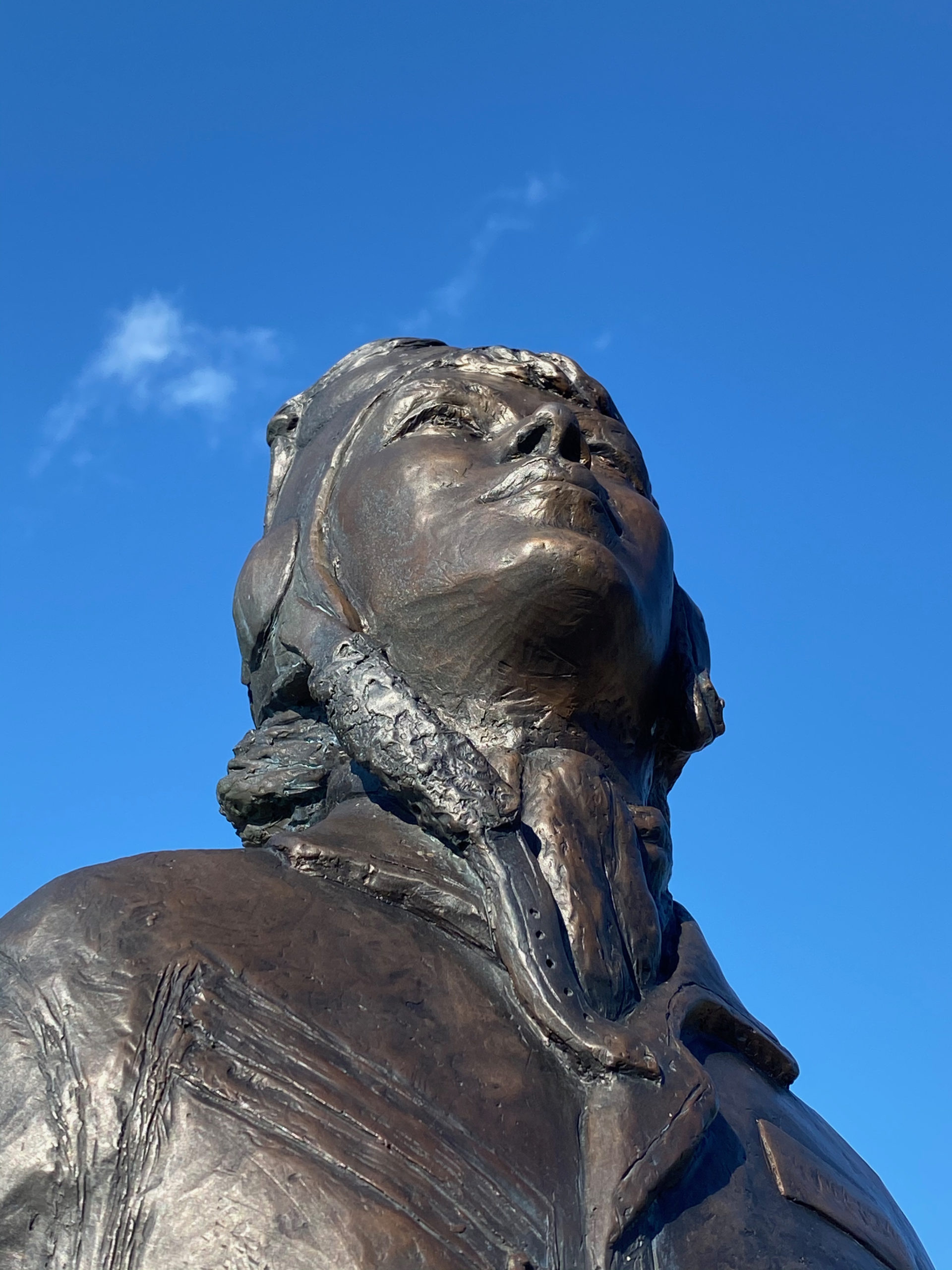
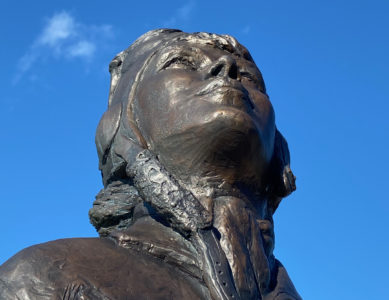
Hi Tom!
I’d love to meet with you sometime this summer, if possible! In 2015 Don Hall and I started a nonprofit called City of Bells. One of our activities is ringing the Minnesota Liberty Bell number nine and four times a year in celebration of holidays. I love reading your site! Time to chat? I am at 952-221-3400
Rebecca,
Thanks for the kind words. I’ll actually be in Minnesota for the month of July. I’ll give you a ring in the next week or so. Cheers.